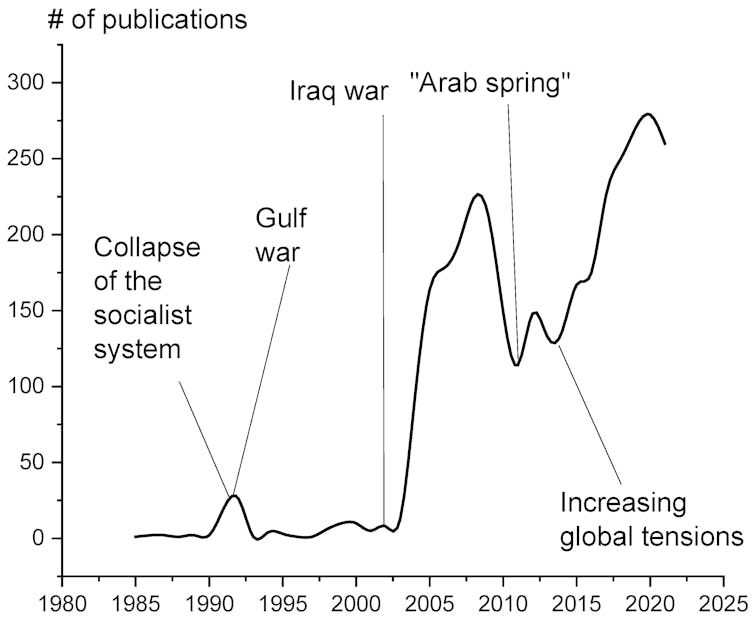On the morning of December 6 1917, a French cargo ship called SS Mont-Blanc collided with a Norwegian vessel in the harbour of Halifax in Nova Scotia, Canada. The SS Mont-Blanc, which was laden with 3,000 tons of high explosives destined for the battlefields of the first world war, caught fire and exploded.
The resulting blast released an amount of energy equivalent to roughly 2.9 kilotons of TNT, destroying a large part of the city. Although it was far from the front lines, this explosion left a lasting imprint on Halifax in a way that many regions experience environmental change as a result of war.
The attention of the media is often drawn to the destructive explosions caused by bombs, drones or missiles. And the devastation we have witnessed in cities like Aleppo, Mosul, Mariupol and now Gaza certainly serve as stark reminders of the horrific impacts of military action.
However, research is increasingly uncovering broader and longer-term consequences of war that extend well beyond the battlefield. Armed conflicts leave a lasting trail of environmental damage, posing challenges for restoration after the hostilities have eased.
Read the full article here!

Comments
Post a Comment